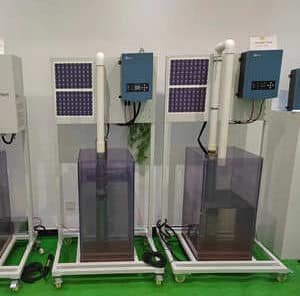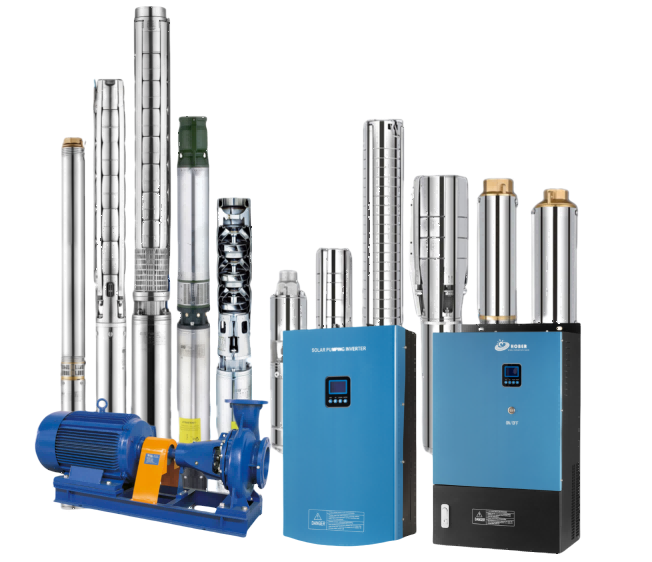As the CEO of HOBER, I’ve dedicated years to enhancing solar water pumping systems. It’s not just about selling a product; it’s about providing a solution that’s efficient, reliable, and, above all, smart. In this post, I’ll share insights on how you can remotely monitor your solar pumping system, focusing on the critical role of solar pump inverters equipped with remote monitoring modules. This isn’t just technology; it’s your gateway to unparalleled operational control.
So, let’s dive into the world of remote monitoring and discover how it can transform your approach to managing solar pumping systems.
Why Is Choosing the Right Inverter So Crucial?
Selecting the appropriate solar pump inverter is a foundational step in setting up a robust remote monitoring system. The inverter acts as the heart of your solar pumping system, and with the right remote monitoring module, it becomes the brains too. This choice determines how effectively you can monitor, control, and optimize the system’s performance.
Choosing the Right Inverter: solar pump inverter
Inverter’s Role in Remote Monitoring:
- Data Hub: The inverter collects essential system data like power output and efficiency.
- Communication Link: It transmits data to remote monitoring platforms using WiFi or 4G.
- Optimization: Allows for remote updates and adjustments, enhancing system efficiency.
- Fault Detection: Monitors and quickly relays system anomalies for prompt response.
- Energy Management: Manages and optimizes the energy conversion from solar panels.
- Remote Interface: Offers a user-friendly interface for remote system monitoring and control.
- Security: Includes features for system protection and unauthorized access alerts.

What Are the Advantages of Remote Monitoring in Solar Pumping Systems?
Embracing remote monitoring in your solar pumping system offers several key benefits. Firstly, it allows for real-time performance tracking, ensuring that the system operates at peak efficiency. Secondly, it enables quick fault detection and resolution, significantly reducing downtime and maintenance costs.
Benefits of Remote Monitoring:
- Enhanced Efficiency: Provides real-time data for immediate adjustments, ensuring peak system performance and energy efficiency.
- Proactive Maintenance: Predicts and prevents failures, reducing downtime and extending equipment lifespan.
- Cost Savings: Reduces the need for on-site inspections, saving on travel and labor expenses, and minimizes the risk of costly repairs.
- Safety and Security: Offers a safer alternative to physical inspections, especially in remote areas, and includes security features to protect against unauthorized access.
- Data-Driven Decisions: Delivers valuable data for identifying trends and optimizing operations, enhancing management and strategic planning.
- Improved Customer Satisfaction: Increases client satisfaction through efficient system management and reliable performance, leading to stronger business relationships.
- Environmental Benefits: Promotes energy conservation and reduces carbon footprint, contributing to environmental sustainability goals.

How Do You Configure the APN for 4G Modules?
Configuring the Access Point Name (APN) for a 4G module is straightforward yet crucial. This involves inserting the SIM card into a mobile device, noting the APN settings, and then transferring this information to the module’s settings through a web interface. This step is essential for ensuring a stable and reliable 4G connection for your remote monitoring module.
Where Should You Avoid Installing the Remote Monitoring Module?
The placement of your remote monitoring module significantly impacts its effectiveness. Avoid areas with direct sunlight, excessive dust, corrosive gases, or high humidity. These environmental factors can hamper the module’s performance and longevity, leading to disruptions in remote monitoring.

What Are the Key Specifications of WiFi and 4G Modules?
Understanding the specifications of WiFi and 4G modules is essential for selecting the right one for your needs. This includes knowing the range, data rate, and antenna specifications for WiFi modules, and the network frequency, data rate, and signal strength indicators for 4G modules. Each has its unique features and advantages, making them suitable for different environmental and operational conditions.
How to Check the Working State of Your 4G Module?
Regularly checking the working state of your 4G module is key to maintaining a reliable remote monitoring system. This involves verifying the SIM card’s network operator and checking the LED indicators on the module. These indicators provide valuable insights into the operational status and connectivity of the module.

What Does Remote Control and Monitoring Entail?
Remote control and monitoring go beyond simple observation. They enable you to make adjustments, respond to alerts, and manage the system from a distance. This feature is crucial for maintaining optimal performance, especially in remote or inaccessible locations.
How to Effectively Bind and Unbind Your Inverter?
Binding your inverter to your account ensures secure and exclusive access to your system’s data. This process is typically done through a web interface or a mobile app. Similarly, unbinding is just as straightforward, providing flexibility and security in managing access to your system.
Understanding Network Frequencies and Data Rates
Different regions and cellular networks support various frequencies and data rates. Knowing these technical details is crucial for ensuring that your remote monitoring modules communicate effectively, especially in areas with varying network infrastructure.
Accessing and Interpreting Fault and Error Records
A crucial aspect of remote monitoring is accessing and understanding fault and error records. This capability allows for quick issue identification and resolution, ensuring minimal system downtime and maintaining efficiency.
How to Remotely Set Your Solar Pumping Inverter?
Remote configuration of your solar pumping inverter is about optimizing performance. Adjusting settings based on real-time data can lead to significant efficiency improvements, ensuring your system operates at its best under varying conditions.
The Role of Mobile Apps in Remote Monitoring
In today’s mobile-centric world, having a dedicated app for iOS and Android for your solar pumping system is a significant advantage. These apps provide the convenience of monitoring and controlling your system from anywhere, right at your fingertips.
Conclusion
In conclusion, mastering the art of remote monitoring in solar pumping systems is a smart business strategy for us at HOBER. It’s not just about technology; it’s about providing a seamless, efficient, and proactive service that adds value to our products and benefits our clients.









